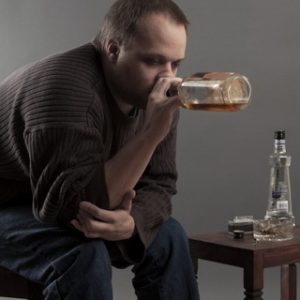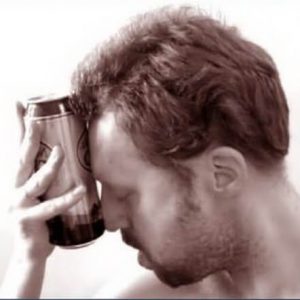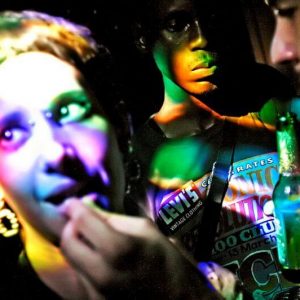The bout is one of the forms of the abuse of alcohol in chronic alcoholism. It is manifested by sudden increased intake of alcohol. A drunken state by a certain periodicity.
In addition to binges when alcohol dependence is found constant (daily) form of alcoholism and intermittent (development of drunken excesses on the background of constant forms of abuse).
Drunken form is one of the most malignant forms. Clearly, this problem emerges on the stage of development II stage of alcoholism. The majority of patients suffering this form of abuse.
Please note: if you are suffering from binge alcoholism person drinks per day excessive dose of alcohol. In the absence of assistance at the end of the binge patients often develop a psychosis
What caused the emergence of binge
Prolonged abuse of alcohol leads to disruption of metabolism. In particular, disturbed the ratio, throughput, release and catabolism of neurotransmitters that perform regulatory control of many body functions.

Formed alcohol dependence requires a constant supply of new doses of alcohol. A long period of abstinence leads to the accumulation of some neurotransmitters, and a reduction in others. So, periodically advancing the ejection of blood catecholamines (adrenaline, noradrenaline, dopamine) causes the physical component of craving for alcohol.
The body requires the neutralization of these compounds with alcohol. Against this background, the alcoholic begins to drink after abstinence large doses of alcohol. There is a failure of adaptation possibilities, which is tributary to the neuro-psychological component, and psychological dependence. The patient begins to drink until complete exhaustion of its possibilities. This is the essence of the binge. Try to understand the types and manifestations of this dangerous health condition.
What are binges
The bout starts sharply emerging, irresistible to the administration of large doses of alcohol. In this state man can not stop in small or medium quantities of alcohol consumed. Unrestrained craving for alcohol in some way it can be called violent. The patient during the kurtosis stops taking care of everything: work, family, problems, health, responsibilities. There is only one goal – the attainment of a state of extreme intoxication. From the beginning of the binge before it ends is almost never sober intervals.
Short-term binges
The bout lasting 2-3 days, sometimes a little longer – 5-7 days, characteristic of the end of I and beginning of II stage. This form can be combined with a one-day episodes of intoxication. In contrast to the more heavy varieties of binge, a short form may be interrupted for reasons of urgent need of work, or other things, such as lack of funds.

Withdrawal syndrome is weak. Some narcologists referred this option to “false” binges. The amount of alcohol taken in a binge phase, may vary. On average it is equal to 0,5-0,7 liters of spirits. The beginning of a short-term binge the patient tries to justify to coincide with some event, not to “advertise” arising cravings. Most often we are talking about “relaxation” at the end of the working week – end, Friday, Saturday and Sunday. Monday morning sober and begin their duties.
At short-term forms of binges still not developing desocialization. A hangover occurs on a background of reception of brine, mineral waters, fizzy.
Please note: short-term booze you can interrupt the creation of external circumstances, such as scandal, need some participation drinker in an urgent case, etc. Such a situation can persist for years.
But the disease gradually progresses, the growing phenomenon of degradation. Gradually replaced by long short-term binges, “true.”
Prolonged binges
The main feature of a true binge is cyclical. Each patient has its own duration excesses and periods of light between them. As the progression of alcoholism binges get shorter and sober “stripes” on the contrary – increased. True bout lasts often several days. The interval between two drunken phases a lot more time than the bout itself. Lucid interval may be from several weeks to several months. For example – “the quarterly” alcoholism, in which the interval between binges is 3 months.
The beginning of the binge is preceded by neuropsychiatric changes, psychomotor anxiety, apathy, depression, irritability, anxiety, etc. all of a Sudden develops a pronounced attraction to alcohol. About this sick family say – “as the chain broke”. Suffering from alcoholism person drinks a lot. In the morning, as a rule, the dose is small. In the afternoon, towards evening, the patient drinks the main the dose, intoxication when it reaches its climax. Especially in the early days drunken state. Some alcoholics can drink 3 or more litres of strong alcohol for knock. Protective gag reflex is absent. During a binge, patients almost nothing to eat or drink. They cease caring about their appearance, cleanliness. Sapojnik often sits or lies at home, not out.
Quantitative and situational control is lost completely. In the second half of the binge dose begins to decrease. Abstinence develop severe withdrawal syndrome, which hurries the patient to take subsequent dose of alcohol. In severe forms of disease it occurs, including at night. Patients suffer from insomnia periodically “falling” nightmares, which do not give them rest and recuperation. Can cause intermittent hallucinatory experiences.
By the end of the binge comes the maladjustment of the body, severe intoxication is a major factor in reducing the thrust. In the “progress” go weak alcoholic beverages. Drinking during a binge ceases to have the ability to work. The completion of the alcoholic-a binge of excess leads to the exacerbation of chronic disease.
The bout is terminated by the return of the gag reflex (versiony syndrome). The patient can not tolerate even the sight of alcohol. Sometimes it is not possible to drink even water.
Have the patient develop and observed:
- slow movement;
- shakiness;
- tremors throughout the body and particularly the hands,
- angina, heart rhythm disturbances;
- liver failure pain in the right upper quadrant and epigastric (stomach) region;
- open healed ulcers of the intestinal tract;
- develop neurological disease.

Vomiting with diarrhea. In 3-4 days after the release of the binge particular danger is the possible development of alcoholic psychosis (delirium tremens).
A few days remains a pronounced asthenic condition with complete intolerance to alcohol. Gradually the aversion to alcohol goes.
In between binges, patients lead normal life, do not consider themselves drinkers and dependent. At this time, many occurs a compensatory lifting force, improved mood. However, gradually, psychological dependence makes itself felt memories, stories, expectations. The degradation of alcohol gradually makes the trick. After every binge episode, the person is changing, primitiveservlet, flattens. Over time, this may start to notice the surrounding.
Please note: some groups of patients have a resistance to alcohol. During a binge, they manage to maintain the ability to work, despite the significant alcoholism.
Pseudonapaea
Option periodic alcohol abuse, which contribute to pathological internal causes (mechanisms) and external factors called situational or pseudogamous.
This group of patients was well defined during the Soviet era, when large numbers of people worked for big industrial production facilities and enterprises in which twice a month were given a money advance and salary. In these days surrounding “‘ll” filled with workers, who had time for 2-3 days to “drink” part of the money they earned. But administrative action, homemade scandals, other circumstances were quickly interrupted by alcoholism. Subsequent sobriety is held until your next payday.
Some sort of pseudonapaea can be observed nowadays during the holidays, big holidays, of rgest etc. Pseudonapaea can last longer than the true form of this disease. The condition of the patients does not reach such severity as in the true versions. That is why pseudonapaea last for a longer time. Cyclicity is completely absent. Pseudogaps can be repeated a week after the end of the previous one, and may be absent six months or longer. In some cases, are combinations of features of both options, in this case, differential diagnosis is difficult.
Currently, in addiction the division of drinking bouts by species almost never used, due to their irrelevance. Attention is drawn to the severity of the problem and the condition of the drinker.
Dipsomania
Dipsomania – variant periodic abuse of alcohol in a person not being an alcoholic.
Dipsomania precedes available anxiety patient, depression, sleep problems, and other mental disorders. Dipsomania during the intake of alcohol is often accompanied by a desire unfocused trips (dramamine), loose sexual behavior. This kind of binge can last a few days or several weeks. Some researchers believe his combination of mental pathology available to the patient on a background of reception of alcohol.
Withdrawal from binge
Deducing from hard drinking is one of the most frequent types of drug treatment. The treatment is carried out on an outpatient basis, at home and in the hospital.

Therapeutic complex includes:
- A means of detoxification – magnesium sulfate, b vitamins, sodium thiosulfate, amino acid solutions, plasma substitutes, Reosorbilact.
- Symptomatic therapy – according to the testimony prescribe pacemakers, antispasmodics, koronarolitiki, hepatotropic drugs.
- Soothing therapy – bromine mixtures, infusion of Passiflora.
- Narcotic drugs and medicine Popova (to prevent delirium tremens).
- Tranquilizers – Phenazepamum, meprobamate.
- Mild neuroleptics (at hallucinatory apprehension and psychopathic disorders).
- Drugs with anabolic effects – piracetam, piriditol.
- Drug-free ways to clean the body – laser irradiation of blood, intestinal lavage plasmapheresis.
Effective way help during a drinking bout is hyperthermia, can quickly remove the withdrawal effects and craving for alcohol.
To relieve thrust a gag is used-sensitizing therapy. The desired effect is achieved by the combination of drugs that cause vomiting, and preparations incompatible with alcohol. This leads to the formation of a conditioned reflex rejection of alcoholic beverages.
After withdrawal from binge, it is recommended to continue treatment final treatment – encoding rehabilitation with psychotherapy.
Forecast
Prospects drinker depend on the stage of the alcoholic process, state of mental and physical health of the patient. People suffering from alcoholic binges, a lot more at risk for heart attacks, strokes, and neurological complications. The result of treatment depends on the awareness of their illness and desire to get rid of alcohol abuse.



